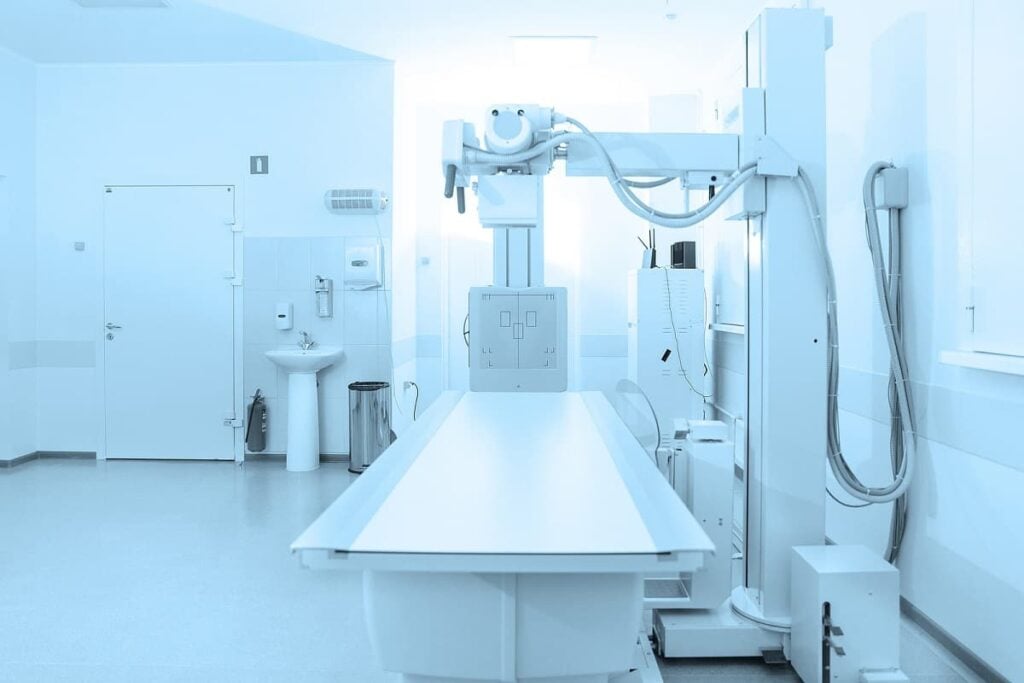An AI Medical Imaging IPO from MaxQ
Table of contents

Seems like every other day we’re hearing news about how artificial intelligence (AI) is becoming more and more capable. We’ve even heard rumors that AI is becoming so advanced that it might actually be able to understand women. While that might be a little far-fetched, it’s clear to see that AI is the way forward. In fact, a whole lot more people might be able to see when we start to use AI for diagnosing eye diseases. A paper published this week by researchers at Google’s DeepMind division in the UK claims that AI can now diagnose more than 50 diseases correctly just by looking at pictures of the human eye. We’ve talked before about just how many players there are in this space, and how we’re now seeing AI algorithms receive FDA approval. One company that’s decided to offer some shares to the public with an IPO is an Israeli AI startup called MaxQ.
An Israeli AI Medical Imaging Startup

Leading the charge at MaxQ is a man by the name of Gene Saragnese whose prior experience includes working as the chief executive officer of Philips Imaging along with being a member of Philips Healthcare’s Executive Team.
That means he held a senior leadership position at a company with more than 70,000 employees and yearly revenues approaching $20 billion. While we typically place recruiters in the same bucket as we place public relations people and used car salesman, in this case, whoever managed to recruit Mr. Saragnese did MaxQ a huge service. This is the sort of caliber leader MaxQ needs if they hope to best all the competition and get their algorithms approved by the FDA – which is a good segue into something else we noticed about Mr. Saragnese.
Update 11/07/2018: MaxQ has now received FDA 510(k) clearance for the company’s Accipio Ix intracranial hemorrhage (ICH) detection software.
MaxQ and Mirada Medical
In addition to his leadership role at MaxQ, we can also see that Mr. Saragnese is the acting chairman of the board at a company called Mirada Medical which has their medical imaging solutions in use at more than 2,000 hospitals, imaging centers, and cancer centers worldwide. The company used to be owned by Siemens Healthcare before being subjected to a buyout which means they’re now privately operated. There isn’t a ton of information available about Mirada, but we did note that MaxQ is licensing software from Mirada Medical that they will need to pay royalties on should they successfully commercialize their product offering. Almost one month ago, Mirada made the following announcement:
Mirada Medical receives FDA 510(k) clearance for the world’s first Artificial Intelligence (AI) software, DLCExpert™, for automated contouring of critical structures in radiation oncology treatment planning
That means Mirada joins the growing list of FDA-approved AI medical imaging algorithms we talked about in an article titled Is “IBM Watson Health Imaging” the Future of Healthcare? Interestingly enough, we see that MaxQ is actually working with IBM Watson, as noted by the below statement in their IPO filing:
To date, we have entered into agreements with GE Healthcare and IBM Watson Health, two leading radiology original equipment manufacturers, or OEMs, to integrate our products into their radiology software and hardware platforms.
This might be a good time to talk about what products MaxQ has in their pipeline. In order to do that, we need to understand a bit more about strokes.
An Introduction to Strokes
Before we started prescribing youth hard drugs like methamphetamines, they had to look elsewhere to get their rocks off. This led to a practice called fading which takes two people. Person 1 leans over and hyperventilates for about 20 seconds. They then stand up while Person 2 squeezes both sides of their neck after which they pass out. It happens remarkably quick, and when Person 1 wakes up they won’t remember one single thing for about 5 to 10 seconds. Everyone has a good laugh without realizing how dangerous the practice actually is. What happens here is that blood is cut off from the brain. That’s what a stroke is.
According to MaxQ, stroke is currently the 4th leading cause of death, the #2 killer in the world and the #1 cause of adult disability. One way that strokes can take place is when bleeding begins in your skull as a result of a hemorrhage (referred to as an intracranial hemorrhage). Here’s a bunch of information on intracranial hemorrhages that nobody on our research team can understand because we made the mistake of hiring a bunch of MBAs instead of MDs:

Even if the above table makes no sense whatsoever, you can still see how medical imaging is being used to diagnose various types of intracranial hemorrhages. Unfortunately, studies have shown that 30% of all medical imaging diagnoses are incorrect and 80% of those errors are perceptual errors that are present but go unnoticed by the human eye. That’s where AI comes in. In an interview with Medgadget, Mr. Saragnese provided the below information on how accurate the MaxQ AI algorithms are:
In initial preclinical trial results,
MedyMatchMaxQ achieved a ~97% sensitivity with 90% specificity, and a ~96% Negative Predictive Value (NPV) for intracranial hemorrhage detection on hundreds of thousands of non-contrast CT slices.
In other words, using AI will save lives.
FDA Approval for Accipio
So how far away is the MaxQ AI solution (branded under the name Accipio) from FDA approval? Well, they’ve received the FDA approval equivalent in Europe which is referred to as a “CE Mark.” According to the IPO filing, MaxQ states the following regarding their FDA approval timeline:
We have not submitted any Accipio products for FDA approval, but we intend to do so commencing in the third quarter of 2018. We expect to receive FDA approval for AccipioIx during the fourth quarter of 2018, and we expect to receive FDA approval for AccipioDx as well as AccipioAx in 2019.
Conclusion
MaxQ isn’t looking to raise very much money which is somewhat surprising considering that getting FDA approval isn’t cheap. $8 million is a drop in the bucket when you look at all the $100 million funding rounds we see these days. Maybe that’s because earlier this year they announced they’re on the FDA fast track for approval. The purpose of the IPO may be less about raising money and more about raising awareness of their products and being seen as a first-mover amongst all the other AI medical imaging startups that are also beginning to think about liquidity events as we enter “peak AI awareness.” While this may be the first AI medical imaging IPO, it’s not likely to be the last.
Sign up to our newsletter to get more of our great research delivered straight to your inbox!
Nanalyze Weekly includes useful insights written by our team of underpaid MBAs, research on new disruptive technology stocks flying under the radar, and summaries of our recent research. Always 100% free.















